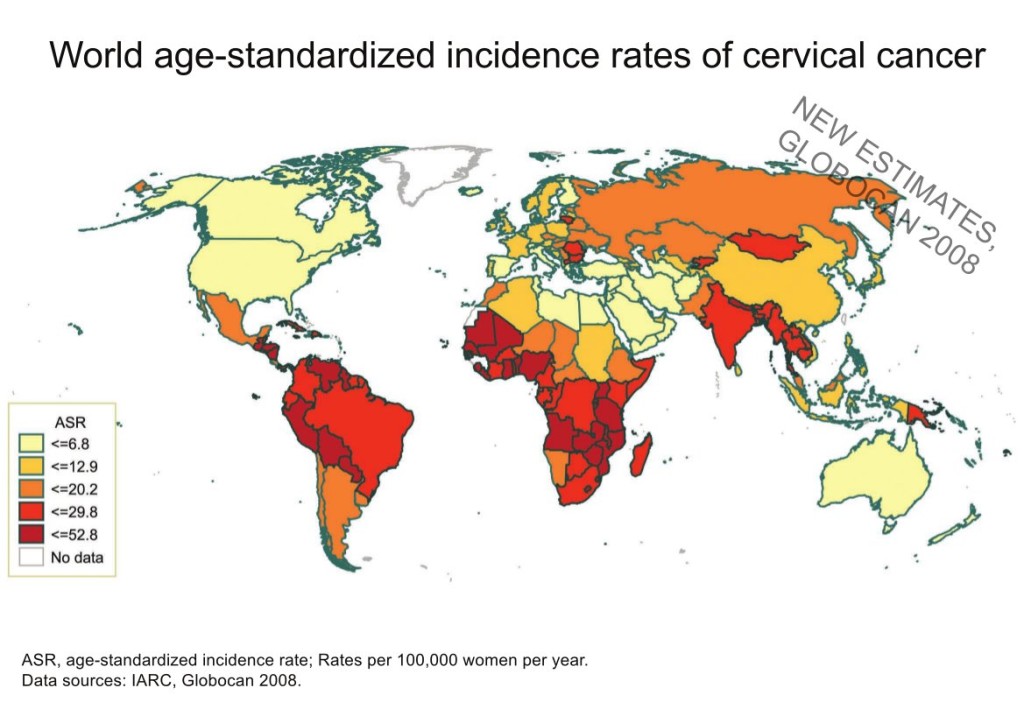The truth about Cervical Cancer #1

WHO World age-standardized incidence rates of cervical cancer, Marking India as a country with very high incidence
There is a paradox with Cervical Cancer. It is a deadly disease if not diagnosed early. But it is also preventable. This paradox exists because cervical cancer is caused by a virus called Human Papilloma Virus which is sexually transmitted, and its presence is as common as sex. Of a hundred women who have sex approximately 80 will be infected with the virus. Throughout sexual life, the risk of getting infected with new strains of the virus remains. HPV, as it is commonly called has more than 120 known strains. Of them 18 are considered high risk and 33 as low risk.
In 75 – 80 % of such infected women, the body is able to clear it by its own immunity, Therefore if immunity is compromised due to any other infection, malnutrition, pregnancy and child birth, sexually transmitted disease, women with organ transplants, or women with HIV infection, there is a chance of getting new infection and reactivation of old and quiescent infections.
Cervical cancer cannot occur without H.P.V. infection, but only a miniscule number of those infected are converted to cancer. In between infection and cancer is a long per-cancerous phase commonly termed as “CIN” or “Cervical Intra-epithelial Neoplasia”. This is when screening and treatment of CIN lesions can prevent the occurrence of cancer. Developed countries have done exactly this, and have a very low cervical cancer burden.
Here is a fact check:
- 25% of all known cases of cervical cancer in the world occur in India.
- 27% of all deaths due to cervical cancer in the world occur in India.
This is because, in India, cases come in late stages, usually stage 3 of stage 4, where treatment can only be palliative. We are more concerned with improving the quality of life rather than the quantity as death from disease is certain.
Once invasive cancer occurs, it spreads fast and progress from stage 1 to stage 3 does not take much time.
Reading this blog, there are a few questions that come to mind.
- How does this concern me?
- Only a very few people get the disease, so why should I think that I will get it?
- Am I at risk?
- What do I do to mitigate my risk?
- Am I really healthy? Or am I harbouring something?
- What do I do now? Whom do I consult?
- Am I safe? Are my loved ones safe?
For the answers to these questions, wait for the next post in this series!
For any queries, comments, feedback, use the comments section below.
Don’t want to miss the next post? Subscribe to this blog’s RSS feed at this https://www.smsaraipur.co.in/feed link. See the comments section for directions to use RSS.
Leave a reply
